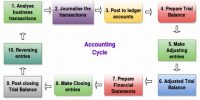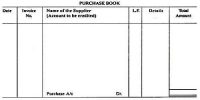Definition
Journal is an accounting record in which transactions are initially recorded in chronological order.
Journals are of various types, such as
General, Adjusting, Closing, Reversing, Opening, Compound, Special, Memorandum, Rectifying, Contra, Compensating, Contingent, etc. Journal.
Advantages of Journal
The advantages of using a journal in the recording process are:
- It discloses in one place the complete effect of a transaction.
- It provides a chronological record of all transactions.
- It helps to prevent or locate errors because the debit and credit amount for each entry can be readily compared.
- It is the historical record of all transactions.
- It helps in making ledger.
Content/Procedure of Journal
Journal or journal entries is/are made on the basis of content of standard form. To make a journal, the following standard form and content is followed:
- Date: The date of the transaction is entered in the Date column. The date recorded should include .the year, month, and day of the transaction.
- Account Title: The debit account title is entered at the extreme left margin of the column headed “Account Titles and Explanation”, and the credit account title is entered on the next line of debit account title, keeping a finger space.
- Explanation: A brief explanation of the transaction is given on the line below the credit account title.
- Space between Journal Entries: A space is left between journal entries. The blank space separates individual journal entries and makes the entire journal easier to read.
- Column: The ref. column is used to place the ledger account number at the time of posting.
- Debit Column: The amount of the debit account title is recorded in the Debit column.
- Credit Column: The amount of the credit account title is recorded in the Credit column.













